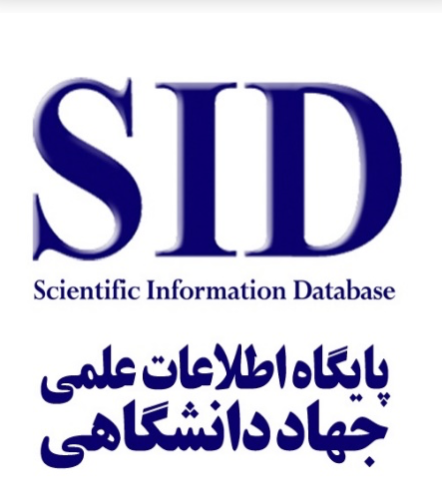ناترازی بانکها بر تأمینمالی بنگاههای اقتصادی
کلمات کلیدی:
ناترازی بانکی, تأمینمالی بنگاهها, بانکداری دیجیتال, نرخ بهره دستوری, اصلاحات بانکیچکیده
ناترازیهای نظام بانکی ایران، بهویژه در سالهای اخیر، به یکی از مسائل کلیدی در فرآیند تأمینمالی بنگاههای اقتصادی تبدیل شده است. ناترازی بانکی به عدم تعادل در منابع و مصارف بانکها، نوسانات شدید در سپردهها و برداشتهای مشتریان، نرخ بهره دستوری و کمبود سرمایه در بانکها اشاره دارد که این عوامل منجر به محدودیتهای جدی در توان تسهیلاتدهی بانکها و افزایش هزینههای تأمینمالی برای بنگاهها میگردد. هدف این مقاله تحلیل اثرات ناترازیهای بانکی بر تأمینمالی بنگاهها و شناسایی راهکارهای مؤثر برای رفع این چالشها است. برای دستیابی به این هدف، از روش تحلیلی - توصیفی استفاده شده و ضمن بررسی وضعیت موجود در نظام بانکی ایران، تأثیر ناترازیها بر عملکرد اقتصادی بنگاهها تحلیل گردیده است. علاوه بر این، با استفاده از تحلیل سناریوهای مختلف، پیامدهای هر یک از راهکارهای پیشنهادی برای بهبود وضعیت تأمینمالی بررسی شده است. نتایج این تحقیق نشان میدهد که ناترازی بانکی علاوه بر افزایش هزینههای تأمینمالی، موجب کاهش قدرت وامدهی بانکها، محدودیت در دسترسی بنگاهها به منابع مالی و تضعیف ظرفیتهای اقتصادی کشور میشود. در این راستا، اصلاح ماده 8 قانون بانکداری بدون ربا، فروش داراییهای نامولد بانکها، تقویت بازار سرمایه و واگذاری بانکهای شبهدولتی به بخش خصوصی از جمله راهکارهایی هستند که میتوانند به کاهش ناترازی بانکی، بهبود نقدینگی بانکها و تسهیل فرآیند تأمین مالی بنگاهها منجر شوند.
دانلودها
مراجع
Abdollahi Poor, M. S., Bet Shikan, & Mohammad Hashim. (2020). Solutions for financial restructuring of banks in Iran. Asset Management and Financial Supply, 8(4), 1–20. https://doi.org/10.22108/amf.2020.119436.1473 (In Persian)
Adrian, M. T., Abbas, N., Ramirez, M. S., & Dionis, G. F. (2024). The US banking sector since the March 2023 turmoil: Navigating the aftermath. International Monetary Fund. https://www.imf.org/en/Publications/WP
Angori, G., Aristei, D., & Gallo, M. (2019). Determinants of banks’ net interest margin: Evidence from the Euro area during the crisis and post-crisis period. Sustainability, 11(14), Article 3785. https://doi.org/10.3390/su11143785
Bu, Y. (2019). Research on the impact of financing liquidity on risk-taking of commercial banks. In MATEC Web of Conferences (Vol. 267, p. 04012). EDP Sciences. https://doi.org/10.1051/matecconf/201926704012
Cooray, A., & Schneider, F. (2018). Does corruption throw sand into or grease the wheels of financial sector development? Public Choice, 177, 111–133. https://doi.org/10.1007/s11127-018-0530-0
Ebadi, M. H., & Pourzereshki, M. H. (2023). Developments in the monetary and banking system in 2021. Majlis Research Center, Economic Studies Office. (In Persian)
Fouejieu, A., Ndoye, A., & Sydorenko, T. (2020). Unlocking access to finance for SMEs: A cross-country analysis. International Monetary Fund. https://doi.org/10.5089/9781513528195.001
Halim, N. A., & Saputra, M. P. A. (2022). Estimation of reserve funds for e-banking transactions using operational value-at-risks. International Journal of Global Operations Research, 3(1), 31–36. https://doi.org/10.47194/ijgor.v3i1.140
Haruna, W., Aremu, T. A., & Modupe, Y. A. (2022). Defending against cybersecurity threats to the payments and banking system. arXiv Preprint, arXiv:2212.12307. https://doi.org/10.48550/arXiv.2212.12307
Mayer, J. (2012). Global rebalancing: Effects on trade and employment. Journal of Asian Economics, 23(6), 627–642. https://doi.org/10.1016/j.asieco.2012.07.002
Rakhimov, S. A. (2020). Importance and problems of temporary deposits in commercial banks (on the example of commercial banks in the USA and Uzbekistan). Theoretical & Applied Science, (1), 271–276. https://doi.org/10.15863/TAS.2020.01.81.45
Roky, R., Abbott, M., Bashar, O., Ullah, A., & Algarni, F. (2020, December). Computational evaluation of profitability: A case of Australian banks. In 2020 Seventh International Conference on Social Networks Analysis, Management and Security (SNAMS) (pp. 1–8). IEEE. https://doi.org/10.1109/SNAMS52053.2020.9336540
Shahabi, V., Tahami Pour, S. R., Shahabi, A., & Amiri, M. (2024). Investigating the formation of the phenomenon of disharmony in Iranian banks and providing the solutions to deal with it. Applied Theories of Economics, 10(4), 173–204. (In Persian)
Xu, T., Hu, K., & Das, U. (2019). Bank profitability and financial stability. International Monetary Fund. https://doi.org/10.5089/9781484397005.001
Demirguc-Kunt, A., Klapper, L., Singer, D., Ansar, S., & Hess, J. (2018). The Global Findex Database 2017: Measuring financial inclusion and the fintech revolution. World Bank Publications.
Federal Reserve Board. (2013, April 17). Series of financial and economic discussions – April 17, 2013. https://www.federalreserve.gov/pubs/feds/2013/201311/index.html
Islamic Parliament Research Center of Iran. (2021). The hidden imbalance in Iran's banking network (2014–2017): An analysis of its nature and root causes. Economic Studies Department, Strategic Report. (In Persian)
National Actions to Help Professional Services Ensure Financial System Integrity. (2024, January 23). Open Government Partnership. https://www.opengovpartnership.org/documents/national-actions-to-help-professional-services-ensure-financial-system-integrity/
Principles for Sound Liquidity Risk Management and Supervision. (2018, January 16). Basel Committee on Banking Supervision, 143–146. https://doi.org/10.1002/9781119444497.app1



